Primary Devices of Computer
A component of the computer system used to store data and processing instructions is called the storage unit. An essential component of computer hardware, a storage device holds data and information needed to process the output of computing tasks. A computer would not be able to operate or even load up without a storage device. Put differently, a storage device may be defined as a piece of hardware that is used for data file extraction, porting, and storage. It may also store data and information for a temporary or permanent period of time.
Types of Computer Memory
- Primary Memory
- Secondary Memory
- Tertiary Memory
Primary Memory: Also referred to as primary memory and internal memory. The CPU's input data, intermediate results, and program instructions are stored in this area. In general, it is smaller. Primary storage includes things like Random Access Memory (RAM) and Read Only Memory (ROM).
Secondary Memory: Memory kept outside of the computer is referred to as secondary storage. Programs and data are typically stored on it permanently and for an extended period of time. Secondary storage devices include SSDs, Pen/Flash drives, Hard Discs, CDs, and DVDs.
Tertiary Memory: Tertiary memory is not regarded as a crucial form of memory as it is not often used in personal computers. Tertiary memory functions on its own without assistance from a person.
Types of Computer Storage Devices
We will now talk about the many kinds of storage devices that are on the market.
Each of these storage devices has a unique specification and function. Several frequently used storage devices include:
- Primary Storage Devices
- Magnetic Storage Devices
- Flash memory Devices
- Optical Storage Devices
- Cloud and Virtual Storage
Primary Storage Devices
RAM
RAM stands for Random Access Memory. It serves as a temporary memory by being utilized to store data that is needed right away. Computers load loaded software from a hard drive into RAM so the user can process and utilize it. The data is erased when the computer is shut down. Computers can do a variety of functions with the aid of RAM, including launching programs, accessing the internet, modifying spreadsheets, playing the newest games, and more. It enables you to transition between various jobs easily and retains your place when you switch between them. In addition, it's used to load and execute programs like your spreadsheet program answer commands like opening all of your spreadsheet edits and switch between other applications like when you exit the spreadsheet to check your email. Your computer almost constantly actively uses memory. It might be anywhere from 1GB and 32GB or 64GB, depending on the characteristics. Though they all have the same function, RAM comes in a variety of forms.
The most popular ones are as follows:
- Static Random Access Memory is what SRAM stands for. It is made up of circuits that, when the power source is turned on, hold onto recorded data. Another name for it is volatile memory. The construction of cache memory uses it. SRAM is more expensive than DRAM in regards to cost, but it has a reduced access time and operates quicker overall.
- DRAM stands for Dynamic Random Access Memory. Capacitors receive electrical charges, which are then utilized to store binary information. DRAM has a higher packing density and is less expensive than SRAM, but its access time is slower.
- SDRAM stands for Synchronous Dynamic Random Access Memory. It is quicker than DRAM and is often used in devices like computers. Following the release of SDRAM improved double data rate RAM (DDR1, DDR2, DDR3, and DDR4) hit the market and was extensively used in desktop and laptop computers used for home and business.
- ROM: It stands for Read-Only Memory. These devices write and store non-volatile data, meaning that once it is in memory, it cannot be changed or removed. This memory form can only be read, not written. Memory of this kind is not volatile. Only one permanent storage form of the data occurs during production. Computer startup instructions are stored in read-only memory (ROM). We call this process bootstrapping. Microwaves and washers are among the numerous technological devices that utilize them. Data on ROM chips is limited to a few megabytes (MB), with each ROM chip having a capacity of 4 to 8 MB.
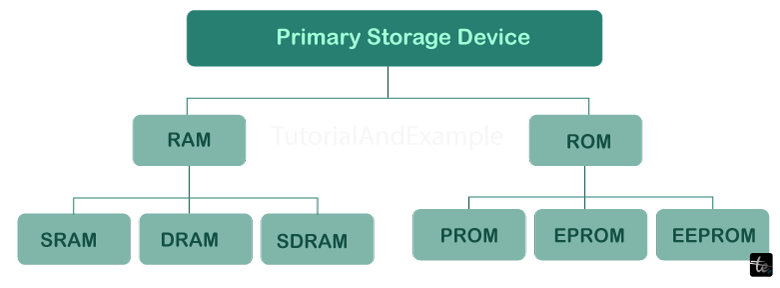
Types of ROM
- Programmable Read-Only Memory, or PROM for short. These are programmable read-only memory units. To enter the software on the PROM, a specialized PROM programmer is used. Data on the PROM cannot be changed after the device has been programmed. Because PROM is non-volatile, data is preserved even when the power is turned off.
- Erasable Programmable Read-Only Memory, or EPROM, is a different kind of memory. An EPROM may be used to put fresh data onto the chip and delete previously stored information.
- Electrically Erasable Programmable Read-Only Memory, or EEPROM for short, allows data to be deleted by simply applying an electric field instead of UV radiation.
Magnetic Storage Devices
- Floppy disk: Another name for a floppy disc is a floppy diskette. It is often used to store external files on a personal computer. A floppy disc is composed of a plastic cartridge that is shielded by a casing. More modern, efficient storage options like USB, etc, are replacing floppy discs.
- Hard Disk: A hard disc is a storage device (HDD) that uses magnetic storage to store and retrieve data. It is a non-volatile storage medium that is unaffected by multiple deletions or modifications. HDDs are often used as supplementary storage devices in laptops and PCs. In reality, it is a series of stacked discs, similar to phonograph records. Every hard drive has tracks or electromagnetically recorded data arranged in concentric rings. The tracks may be read with a head that functions similarly to a phonograph arm (but is fixed in place). HDDs have a respectable read/write speed but could be faster. It might be many GBs or several TBs or more.
- Magnetic card: A magnetic card is one in which the magnetism of minute iron-based magnetic particles found on its band is altered or rearranged in order to record data. Another name for it is a swipe card. It serves as a credit card, identification card, password (to enter a hotel room or residence), and other similar functions.
- A music cassette is another name for a tape cassette. It's a flat, rectangular container that holds analog magnetic tape data storage. Audio recordings are often stored on it.
- SuperDisk: SuperDisk is another name for the LS-240 and LS-120. Imation Corporation introduced it, and OEM computers seem to like it. Data up to 240 MB may be stored on it.
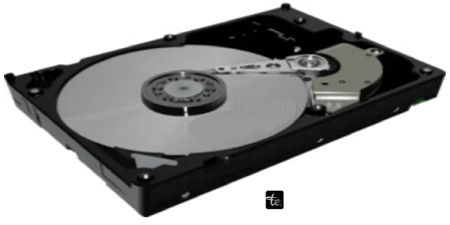
Flash Memory Equipment
It is a more affordable and lightweight storage device. Since it is more dependable and effective than other storage devices, it is the most widely utilized device for data storage.
Several frequently used flash memory devices include:
- Pen drive: Another name for this kind of drive is a USB flash drive, which combines flash memory with an inbuilt USB interface. We can read and write data into these devices considerably more quickly and effectively by connecting them directly to our laptops and PCs. These gadgets are quite lightweight. In general, it varies from 1GB to 256 GB.
- Solid State Drive is a mass storage device similar to an HDD. Because it doesn't have optical discs as hard discs do, it is more resilient. It is lightweight, consumes less power than hard drives, and has ten times the read and write speeds of hard discs. However, they are also expensive. Even while SSDs perform the same functions as hard drives, their fundamental parts are quite different. Solid-state drives, or SSDs for short, are devoid of moving elements, unlike hard drives. SSDs use non-volatile storage to store data instead of magnetic platters. SSDs don't need to "spin up" since they don't have any moving components. It spans many more TB to as little as 150GB.
- Secure Digital Card: Another name for it is the SD card. It is often used with electronic devices like phones, digital cameras, etc., to store more data. Due to its portability and compact SD card size, it is readily inserted into electronic gadgets. It comes in many capacities, including 2GB, 4GB, and 8 GB.
- Memory Card: Typically found in gaming consoles, printers, and digital cameras, etc. Large volumes of data are also stored on it, and it comes in various capacities. A separate memory card reader is needed in order to use a memory card on a computer.
- Multimedia Card (MMC): This integrated circuit is often found in digital cameras, in-car radios, and other devices. It is an external data/information storage device.
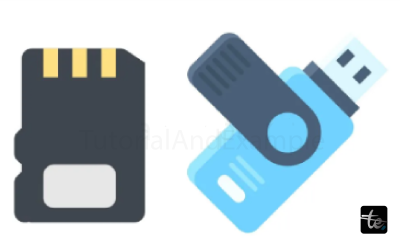
Optical Storage Devices
Another kind of secondary storage device is optical storage. It is a storage device that is detachable.
Here are a few examples of optical storage devices:
- CD: Compact Disc is the name for it. To store data, it has sectors and tracks all over its surface. It is round and composed of polycarbonate plastic. A CD may hold up to 700 MB of data. There are two varieties of it:
- CD-R is an acronym for read-only Compact Disc. Data on this kind of CD cannot be removed once it is written; it can only be read.
- The acronym CD-RW denotes Compact Disc Read Write. It is simple to write or delete data on this kind of CD several times.
- DVD: Digital Versatile Disc is the name for it. Data is stored on circular, flat optical discs called DVDs. It is available in two distinct capacities: 4.7GB single-layer discs and 8.5GB double-layer discs. Although DVDs and CDs have similar looks, DVDs have greater storage than CDs. There are two varieties of it:
- DVD-R is an acronym for read-only digital versatile disc. Once data is written on this kind of DVD, it cannot be removed; it can only be read. Generally speaking, it is used to write films, etc.
- The acronym for Digital Versatile Disc Read Write is DVD-RW. It is simple to write or delete data on this kind of DVD several times.
- Similar to CDs and DVDs, Blu-ray discs have a maximum storage capacity of 25GB. A separate Blu-ray reader is required to play a Blu-ray disc. This Blu-ray technology allows a disc to be read from a blue-violet laser, which allows for a longer wavelength and higher density of data storage.
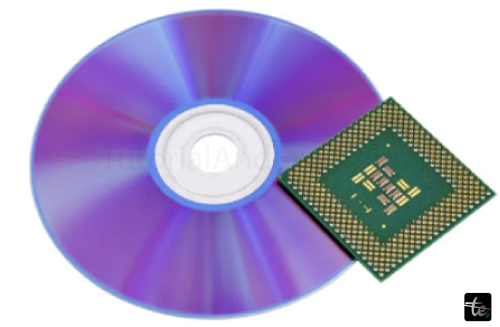
Cloud and Virtual Storage
These days, virtual or cloud storage devices have replaced secondary memory. Our files and other belongings may be kept in the cloud, where they will remain for as long as we continue to pay for cloud storage. Cloud services are offered by several businesses, most notably Google, Amazon, Microsoft, etc. We have many advantages from renting the space we need, and we can pay the fee for it. The user doesn't engage with the physical equipment or its upkeep, even if it is really kept in a physical device housed in the service provider's data centers. For instance, customers may store data electronically rather than on actual hard drive devices using Amazon Web Services' AWS S3 storage option. These kinds of developments mark the cutting edge of storage medium development.
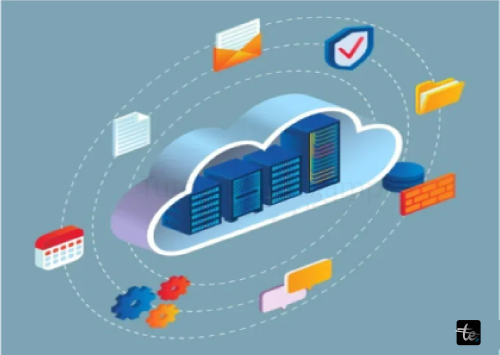
Characteristics of Computer Storage Devices
- Because the storage devices are mobile, data saved in the memory may be updated or replaced as needed.
- Because storage devices are readily readable, writeable, and rewritable, they verify that recorded data may be replaced or erased in accordance with requirements.
- Because managing storage devices doesn't need a high level of ability, they are accessible and straightforward to use.
- An additional benefit to the system is the storage capacity of these devices.
- Data may be moved between storage devices with ease, and their performance is superior.
FAQ
1. What exactly is a storage device on a computer?
A computer storage device allows the user to store data on a computer system and retrieve it securely. Storage devices come in a variety of forms.
2. What kinds of optical storage devices are there?
Optic devices include things like Blu-Discs, DVDs, and CD-ROMs.
3. Can a gadget be stored in the cloud online?
Online cloud storage is only a technology that allows us to store data files, photos, and other types of information online. It is not a physical object.